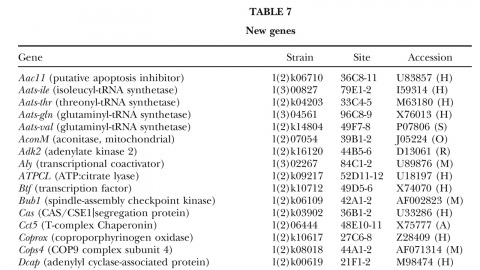Filter
Associated Lab
Publication Date
Type of Publication
3 Publications
Showing 1-3 of 3 resultsInsect metamorphosis is a fascinating and highly successful biological adaptation, but there is much uncertainty as to how it evolved. Ancestral insect species did not undergo metamorphosis and there are still some existing species that lack metamorphosis or undergo only partial metamorphosis. Based on endocrine studies and morphological comparisons of the development of insect species with and without metamorphosis, a novel hypothesis for the evolution of metamorphosis is proposed. Changes in the endocrinology of development are central to this hypothesis. The three stages of the ancestral insect species-pronymph, nymph and adult-are proposed to be equivalent to the larva, pupa and adult stages of insects with complete metamorphosis. This proposal has general implications for insect developmental biology.
The mushroom bodies (MBs) are prominent structures in the Drosophila brain that are essential for olfactory learning and memory. Characterization of the development and projection patterns of individual MB neurons will be important for elucidating their functions. Using mosaic analysis with a repressible cell marker (Lee, T. and Luo, L. (1999) Neuron 22, 451-461), we have positively marked the axons and dendrites of multicellular and single-cell mushroom body clones at specific developmental stages. Systematic clonal analysis demonstrates that a single mushroom body neuroblast sequentially generates at least three types of morphologically distinct neurons. Neurons projecting into the (gamma) lobe of the adult MB are born first, prior to the mid-3rd instar larval stage. Neurons projecting into the alpha’ and beta’ lobes are born between the mid-3rd instar larval stage and puparium formation. Finally, neurons projecting into the alpha and beta lobes are born after puparium formation. Visualization of individual MB neurons has also revealed how different neurons acquire their characteristic axon projections. During the larval stage, axons of all MB neurons bifurcate into both the dorsal and medial lobes. Shortly after puparium formation, larval MB neurons are selectively pruned according to birthdays. Degeneration of axon branches makes early-born gamma neurons retain only their main processes in the peduncle, which then project into the adult gamma lobe without bifurcation. In contrast, the basic axon projections of the later-born (alpha’/beta’) larval neurons are preserved during metamorphosis. This study illustrates the cellular organization of mushroom bodies and the development of different MB neurons at the single cell level. It allows for future studies on the molecular mechanisms of mushroom body development.
A fundamental goal of genetics and functional genomics is to identify and mutate every gene in model organisms such as Drosophila melanogaster. The Berkeley Drosophila Genome Project (BDGP) gene disruption project generates single P-element insertion strains that each mutate unique genomic open reading frames. Such strains strongly facilitate further genetic and molecular studies of the disrupted loci, but it has remained unclear if P elements can be used to mutate all Drosophila genes. We now report that the primary collection has grown to contain 1045 strains that disrupt more than 25% of the estimated 3600 Drosophila genes that are essential for adult viability. Of these P insertions, 67% have been verified by genetic tests to cause the associated recessive mutant phenotypes, and the validity of most of the remaining lines is predicted on statistical grounds. Sequences flanking >920 insertions have been determined to exactly position them in the genome and to identify 376 potentially affected transcripts from collections of EST sequences. Strains in the BDGP collection are available from the Bloomington Stock Center and have already assisted the research community in characterizing >250 Drosophila genes. The likely identity of 131 additional genes in the collection is reported here. Our results show that Drosophila genes have a wide range of sensitivity to inactivation by P elements, and provide a rationale for greatly expanding the BDGP primary collection based entirely on insertion site sequencing. We predict that this approach can bring >85% of all Drosophila open reading frames under experimental control.

